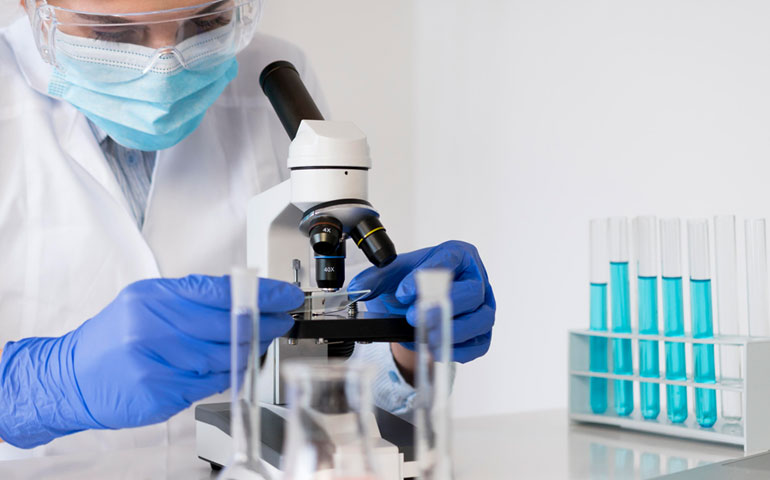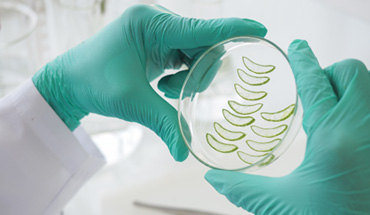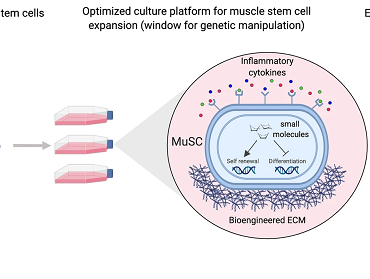Stem Cells and DNA Therapies Used In Treating Anti-Aging
In anti-aging, stem cell treatments address age-related degeneration and promote overall health and vitality. As we age, regenerative capacity of our tissues and organs diminishes. Stem cell therapies rejuvenate aging tissues by replenishing them with fresh, functional cells. Thus by the introduction of new stem cells, which then stimulate the body's natural repair mechanisms and enhance tissue regeneration, thereby potentially slowing down the aging process and improving overall health.Stem Cells:
Regulate DNA TranscriptionDictate Epigenetic Modifications
Control Telomere Maintenance (the protective caps of chromosomes that shorten with cell division and are associated with aging and cellular senescence)
Because of those 3 main modifications, stem cell therapy holds promise for addressing age-related disorders by promoting tissue regeneration, rejuvenation, and repair. It involves the administration of stem cells, which have the potential to differentiate into various cell types, into affected tissues or organs. The goal is to replenish or replace aging or damaged cells with healthier, functional cells.
Stem cells may be derived from various sources, such as adipose tissue, bone marrow, or induced pluripotent stem cells (iPSCs). By introducing these cells into the body, they have the potential to enhance tissue function and reduce the impact of age-related degeneration.
How Stem Cells Treat Anti-Aging:
Regulation of DNA Transcription: DNA transcription refers to the process by which genetic information encoded in DNA is transcribed into RNA, which then guides the production of proteins. Alterations in DNA transcription patterns can occur during the aging process and contribute to age-related disorders. Researchers are investigating ways to modulate DNA transcription to restore more youthful patterns and counteract age-related changes. This includes exploring methods to regulate the expression of specific genes involved in aging and disease processes.Epigenetic Modifications: Epigenetic modifications are reversible changes that occur in the structure of DNA and its associated proteins without altering the underlying genetic code. These modifications can influence gene expression patterns and impact aging processes. Researchers are exploring epigenetic interventions to modulate gene expression and potentially reverse or slow down age-related changes. This may involve targeting enzymes responsible for DNA methylation or histone modifications to reset epigenetic marks and promote more youthful cellular function.
Telomere Maintenance: Telomeres are protective caps at the ends of chromosomes that shorten with each cell division and are associated with aging and cellular senescence. Strategies aimed at preserving or extending telomeres are being explored as a means to slow down the aging process. This includes investigating the use of telomerase, an enzyme that can elongate telomeres, as well as exploring telomere-targeted therapies to delay or counteract cellular senescence. The Anti-Aging effects of stem cells: Our current knowledge of human stem cells makes it feasible to delay aging and improve health and lifespan. Stem cell treatments can play a crucial role in delaying the aging process. Together with anti-aging genes, a stem cell infusion/transplant can create a sophisticated shield that can prevent or slow the effects of aging. Increased wear and tear of the body’s natural stem cells increases cellular damage and accelerates the natural aging process. Stem cell therapy combined with anti-aging genes can potentially absorb the process of cellular aging
Our Treatment Protocol For: Anti-Aging
Treatment & Recovery proceduresThe general overview of the typical steps involved in a stem cell transplant:1) Preparatory Phase
2) Stem Cell Collection
3) Transplantation
4) Recovery And Supportive Care
5) Engraftment & Immune System Recovery
6) Follow-up Care
* Therapy involves the transplantation or injection of specially prepped stem cells into the patient's body, where they replace and repair damaged or diseased cells, promote tissue regeneration, and stimulate the body's natural healing process.




